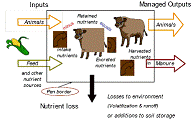Biological Systems Engineering, Department of

Department of Agricultural and Biological Systems Engineering: Presentations and White Papers
Date of this Version
6-2005
Document Type
Article
Abstract
Gene delivery has the potential to be used in diagnostic applications, specifically to investigate cellular signal transduction pathways responsible for disease. Analysis of multiple pathways or genes in a parallel format can be achieved using a transfected cell array, a high throughput approach to correlate gene expression with functional cell responses, based on gene delivery from a substrate that supports cell adhesion. Substrate-mediated gene delivery functions by self-assembling DNA with nonviral vectors, resulting in positively charged complexes that can interact with a biomaterial or substrate. Cells cultured on the substrate are exposed to elevated DNA concentrations within the local microenvironment, which enhances transfection. DNA complexes can be immobilized on the substrate through specific interactions introduced through complementary functional groups on the vector and surface or through nonspecific interactions. As surface properties are critical to the efficiency of the surface delivery approach, self-assembled monolayers (SAMs) of alkanethiols on gold were used to study the mechanisms of transfection by complexes nonspecifically immobilized on chemically specific substrates. Surface hydrophilicity and ionization were found to mediate both immobilization and transfection. Additionally, SAMs were used in conjugation with soft lithographic techniques to imprint substrates with specific patterns of SAMs, resulting in patterned DNA complex deposition and transfection.


Comments
Poster presentation, American Society of Gene Therapy Annual Meeting, St. Louis, MO, June 1–5, 2005.
Published in Molecular Therapy 11, Supplement 1 (May 2005), p. S80; doi: 10.1016/j.ymthe.2005.06.207 Copyright © The American Society of Gene Therapy; published by Nature Publishing Group. Used by permission.